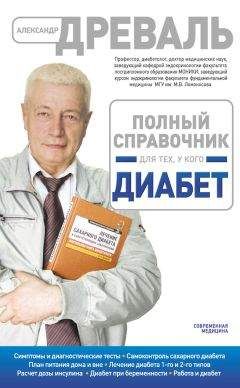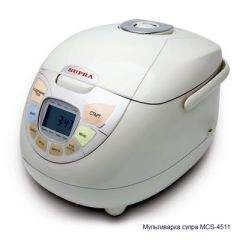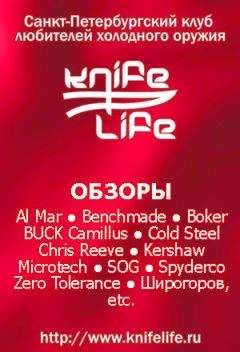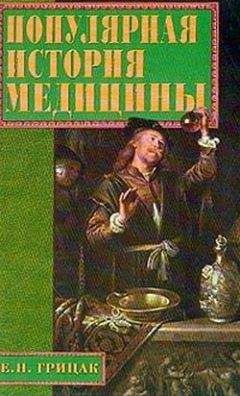Елена Беликова - Английский язык

Скачивание начинается... Если скачивание не началось автоматически, пожалуйста нажмите на эту ссылку.
Жалоба
Напишите нам, и мы в срочном порядке примем меры.
Описание книги "Английский язык"
Описание и краткое содержание "Английский язык" читать бесплатно онлайн.
Студенту без шпаргалки никуда! Удобное и красивое оформление, ответы на все экзаменационные вопросы ведущих вузов России.
muscles – мышцы
active – активный
motor apparatus – двигательный аппарат
various – различный
movement – движение
elongated – удлиненный
threadlike – нитевидный
be bound – быть связанным
ability – возможность
capable – способность
scientist – ученый
basic – основной
12. Bones
Bone is the type of connective tissue that forms the body s supporting framework, the skeleton. Serve to protect the internal organs from injury. The bone marrow inside the bones is the body's major producer of both red and white blood cells.
The bones of women are generally lighter than those of men, while children's bones are more resilient than those of adults Bones also respond to certain physical physiological changes: atrophy, or waste away.
Bones are generally classified in two ways. When classified on the basis of their shape, they fall into four categories: flat bones, such as the ribs; long bones, such as the thigh bone; short bones, such as the wrist bones; and irregular bones, such as the vertebrae. When classified on the basis of how they develop, bones are divided into two groups: endochondral bones and intramembraneous bones. Endochondral bones, such as the long bones and the bones at the base of the skull, develop from cartilage tissue Intramembraneous bones, such as the flat bones of the roof of the skull, are not formed from cartilage but develop under or within a connective tissue membrane. Although endochondral bones and intramembraneous bones form in different ways, they have the same structure.
The formation of bone tissue (ossification) begins early in embryological development. The bones reach their full size when the person is about 25.
Most adult bone is composed of two types of tissue: anouter layer of compact bone and an inner layer of spongy bone. Compact bone is strong and dense. Spongy bone is light and porous and contains bone marrow The amount of each type of tissue varies in different bones. The flat bones of the skull consist almost entirely of compact bone, with very little spongy tissue. In a long bone, such as the thigh bone, the shaft, called the diaphysis, is made up largely of compact bone. While the ends, called epyphyses, consist mostly of spongy bone. In a long bone, marrow is also present inside the shaft, in a cavity called the medullary cavity.
Surrounding every bone, except at the surface where it meets another bone, is a fibrous membrane called the periosteum. The outer layer of the periosteum consists of a network of densely packed collagen fibres and blood vessels. This layer serves for the attachment of tendons, ligaments, and muscles to the bone and is also important in bone repair.
The inner layer of the periosteum has many fibres, called fibres of Sharpey, which penetrate the bone tissue, anchoring the periosteum to the bone. The inner layer also has many bone-forming cells, or osteoblasts, which are responsible for the bone's growth in diameter and the production of new bone tissue in cases of fracture, infection.
In addition to the periosteum, all bones have another membrane, the endosteum. It lines the marrow cavity as well as the smaller cavities within the bone. This membrane, like the inner layer of the periosteum, contains os-teoblasts, and is important in the formation of new bone tissue.
13. Bones. Chemical structure,
Bone tissue consists largely of a hard substance called the matrix. Embedded in the matrix are the bone cells, or osteocytes. Bone matrix consists of both organic and inorganic materials. The organic portion is made up chiefly of collagen fibres. The inorganic portion of matrix constitutes about two thirds of a bone's total weight. The chief inorganic substance is calcium phosphate, which is responsible for the bone's hardness. If the organic portion were burned out the bone would crumble under the slightest pressure. In the formation of intramembraneous bone, certain cells of the embryonic connective tissue congregate in the area where the bone is to form. Small blood vessels soon invade the area, and the cells, which have clustered in strands, undergo certain changes to become osteoblasts. The cells then begin secreting collagen fibers and an intercellular substance. This substance, together with the collagen fibers and the connective tissue fibers already present, is called osteoid. Osteoid is very soft and flexible, but as mineral salts are deposited it becomes hard matrix. The formation of endochondral bone is preceded by the formation of a cartilaginous structure similar in shape to the resulting bone. In a long bone, ossification begins in the area that becomes the center of the shaft. In this area, cartilage cells become osteoblasts and start forming bone tissue This process spreads toward either end of the bone. The only areas where cartilage is not soon replaced by bone tissue are the regions where the shaft joins the two epiphyses. These areas, called epiphyseal pla-res, are responsible for the bones continuing growth in length. The bone's growth in diameter is due to the addition of layers of bone around the outside of the shaft As they are formed, layers of bone on the inside of the shaft are removed. In all bones, the matrix is arranged in layers called lamellae. In compact bone, the lamellae are arranged concentrically around blood vessels, and the space containing each blood vessel is called a Haver-sian canal. The osteocytes are located between the lamellae, and the canaliculi containing their cellular extensions connect with the Haversian canals, allowing the passage of nutrients and other materials between the cells and the blood vessels. Bone tissue contains also many smaller blood vessels that extend from the periosteum and enter the bone through small openings. In long bones there is an additional blood supply, the nutrient artery, which represents the chief blood supply to the marrow. The structure of spongy is similar to that of compact bone. However, there are fewer Haversian canals, and the lamellae are arranged in a less regular fashion, forming spicules and strands known as trabeculae.
New wordsbone – кость
internal – внешний
phosphorus – фосфор
atrophy – атрофия
spongy – губчатый
tendon – сухожилие
ligament – связка
flexible – гибкий
periosteum – надкостница
osteoblast – остеобласт (клетка, образующая кость)
rigidity – неподвижность
shape – форма
to crumble – крошиться
to congregate – собираться
epiphyseal – относящийся к эпифизу
shaft – ствол, тело (длинной) кости, диафиз
14. Skull
Bones of the skull: the neurocranium (the portion of the skull that surrounds and protects the brain) or the viscerocra-nium (i. e., the skeleton of the face). Bones of the neurocranium Frontal, Parietal, Temporal, Occipital, Ethmoid, Sphenoid.
Bones of the viscerocranium (surface): Maxilla, Nasal, Zygomatic, Mandible. Bones of the viscerocranium (deep): Ethmoid, Sphenoid, Vomer, Lacrimal, Palatine, Inferior nasal concha. Articulations: Most skull bones meet at immovable joints called sutures. The coronal suture is between the frontal and the parietal bones The sagittal suture is between two parietal bones. The lambdoid suture is between the parietal and the occipital bones. The bregma is the point at which the coronal suture intersects the sagittal suture
The lambda is the point at which the sagittal suture intersects the lambdoid suture. The pterion is the point on the lateral aspect of the skull where the greater wing of the sphenoid, parietal, frontal, and temporal bones converge. The temporomandibular joint is between the mandibular fossa of the temporal bone and the condylar process of the mandible.
The parotid gland is the largest of the salivary glands. Structures found within the substance of this gland include the following: Motor branches of the facial nerve CN VII enters the parotid gland after emerging from the stylomastoid foramen at the base of the skull. Superficial temporal artery and vein. The artery is a terminal branch of the external carotid artery.
Retromandibular vein, which is formed from the maxillary and superficial temporal veins.
Great auricular nerve, which is a cutaneous branch of the cer vical plexus. Auriculotemporal nerve, which is a sensory branch of V3. It supplies the TMJ and conveys postganglionic parasympathetic fibers from the otic ganglion to the parotid gland Parotid (Stensen s) duct, which enters the oral cavity at the level of the maxillary second molar. The facial artery
is a branch of the external carotid artery in the neck. It
terminates as the angular artery near the bridge of the nose.
The muscles of faceNew wordsbrain – мозг
frontal – лобная
parietal – теменная
temporal – височная
occipital – затылочная
ethmoid – решетчатая
maxilla – верхняя челюсть
zygomatic – скуловой
mandible – нижняя челюсть
sphenoid – клиновидная
vomer – сошник
lacrimal – слезная
palatine – небная
nasal concha – носовая раковина
15. Neck. Cervical vertebrae, cartilages, triangels
Cervical vertebrae: There are seven cervical vertebrae of which the first two are atypical. All cervical vertebrae have the foramina transversaria which produce a canal that transmits the vertbral artery and vein.
Atlas: This is the first cervical vertebra (C1). It has no body and leaves a space to accommodate the dens of the second cervical vertebra. Axis: This is the second cervical vertebra (C2). It has odontoid process, which articulates with the atlas as a pivot joint. Hyoid bone is a small U-shaped bone, which is suspended by muscles and ligaments at the level of vertebra C3.
Laryngeal prominence is formed by the lamina of the thyroid cartilage.
Cricoid cartilage. The arch of the cricoid is palpable below the thyroid cartilage and superior to the first tracheal ring (vertebral level C6). Triangles of the neck: The neck is divided into a posterior and an arterior triangle by the sternocleidomastoid muscle. These triangles are subdivided by smaller muscles into six smaller triangles. Posterior triangle is bound by the sternocleidomastoid, the clavicle, and the trapezius. Occipital triangle is located above the inferior belly of the omohyoid muscle. Its contents include the following: CN XI Cutaneous branches of the cervical plexus are the lesser occipital, great auricular, transverse cervical, and supaclavicular nerves.
Subclavian (omoclavicular, supraclavicular) triangle is located below the inferior belly of the omohyoid. Its contents include the following: Brachial plexus supraclavicular portion The branches include the dorsal scapular, long thoracic, subclavius, and suprascapular nerves.
The third part of the subclavian artery enters the subclavian triangle.
The subclavian vein passes superficial to scalenus anterior muscle. It receives the external jugular vein.
Anterior triangle is bound by the sternocleidomastoid muse the midline of the neck, and the inferior border of the body of the mandible. Muscular triangle is bound by the sternocleidomastoid muscle, the superior belly of the omohyoid muscle, and the midline of the neck. Carotid (vascular) triangle is bound by the sternocleidomastoid muscle, the superior belly of the omohyoid muscle and the posterior belly of the digastric muscle. The carotid triangle contains the following: Internal jugular vein; Common carotid artery, bifurcates and form the internal and external carotid arteries. The external carotid artery has six branches (i. e., the superior thyroid; the ascending pharyngeal, the lingual, the facial, the occipital, and the posterior auricular arteries). Vagus nerve; hypoglossal nerve; internal and external laryngeal branches of the superior laryngeal branch of the vagus nerve. Digastric (sub-mandibular) triangle is bound by the anterior and posterior bellies of the digastric muscle and the inferi or border of the body of the mandible. It contains the submandibular salivary gland. Submental triangle is bound by the anterior belly of the digastric muscle, the hyoid bone, and the midline of the neck. It contains the submental lymph nodes.
16. Neck. Root, fascies of the neck
Root of neck: This area communicates with the superior medi astinum through the thoracic inlet. Structures of the region include the following: subclavian artery and vein. The subclavian artery passes poste rior to the scalenus anterior muscle, and the vein passes ante rior to it Branches of the artery include: vertebral artery; thyrocervical trunk, which gives rise to the inferior thyroid, the transverse cervical, and the suprascapular arteries; Internal thoracic artery.
Phrenic nerve is a branch of the cervical plexus, which arises from C3, C4, and C5. It is the sole motor nerve to the diaphragm. It crosses the anterior scalene muscle from lateral to medial to enter the thoracic inlet.
Recurrent laryngeal nerve is a branch of the vagus nerve. This mixed nerve conveys sensory information from the laryngeal; mucosa below the level of the vocal folds and provides motor innervation to all the intrinsic muscles of the larynx except the cricothyroid muscle.
Thoracic duct terminates at the junction of the left subclavian and the left internal jugular veins On the right side of the body, the right lymphatic duct terminates in a similar fashion.
Fascias of the neck Superficial investing fascia encloses the platysma, a muscle of facial expression, which has migrated to the neck
Deep investing fascia surrounds the trapezius and ster-noclei – domastoid muscles.
Retropharyngeal (visceral) fascia surrounds the pharynx.
Prevertebral fascia invests the prevertebral muscles of the nee (i. e., longus colli, longus capitis) This layer gives rise to a derivative known as the alar fascia.
The major muscle groups and their innervations. A simple method of organizing the muscles of the neck is based on two basic principles: (1) The muscles may be arranged in group according to their functions; and (2) all muscles in a group share common innervation with one exception in each group.
Group 1: Muscles of the tongue. All intrinsic muscles plus all but one of the extrinsic muscles (i. e., those containing the suffix, glossus) of the tongue are supplied by CN XII. The one exception is palatoglossus, which is supplied by CN X.
Group 2: Muscles of the larynx. All but one of the intrinsic muscles of the larynx are supplied by the recurrent la-ryngeal branch of the vagus nerve. The sole exception is the cricothyroid muscle, which is supplied by the external laryngeal branch of the vagus.
Group 3: Muscles of the pharynx. All but one of the longitudinal and circular muscles of the pharynx are supplied by CNs X and XI (cranial portion). The sole exception is the stylopharyngeus muscle, which is supplied by CN IX.
Group 4: Muscles of the soft palate. All but one of the muscles of the palate are supplied by CNs X and XI (cranial portion). The sole exception is the tensor veli palatini, which is supplied CN V3.
Подписывайтесь на наши страницы в социальных сетях.
Будьте в курсе последних книжных новинок, комментируйте, обсуждайте. Мы ждём Вас!
Похожие книги на "Английский язык"
Книги похожие на "Английский язык" читать онлайн или скачать бесплатно полные версии.
Мы рекомендуем Вам зарегистрироваться либо войти на сайт под своим именем.
Отзывы о "Елена Беликова - Английский язык"
Отзывы читателей о книге "Английский язык", комментарии и мнения людей о произведении.
























